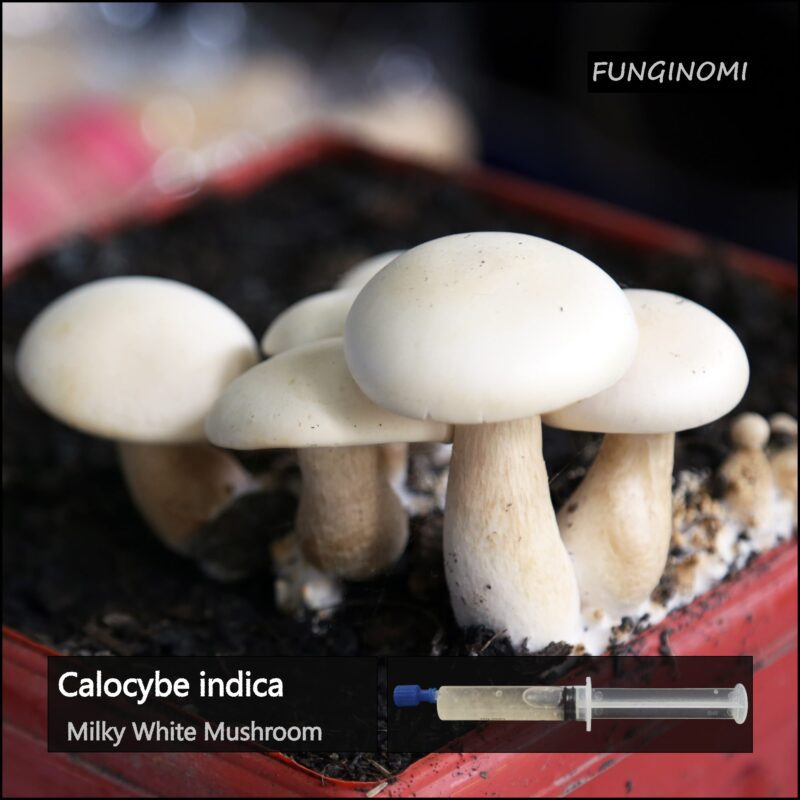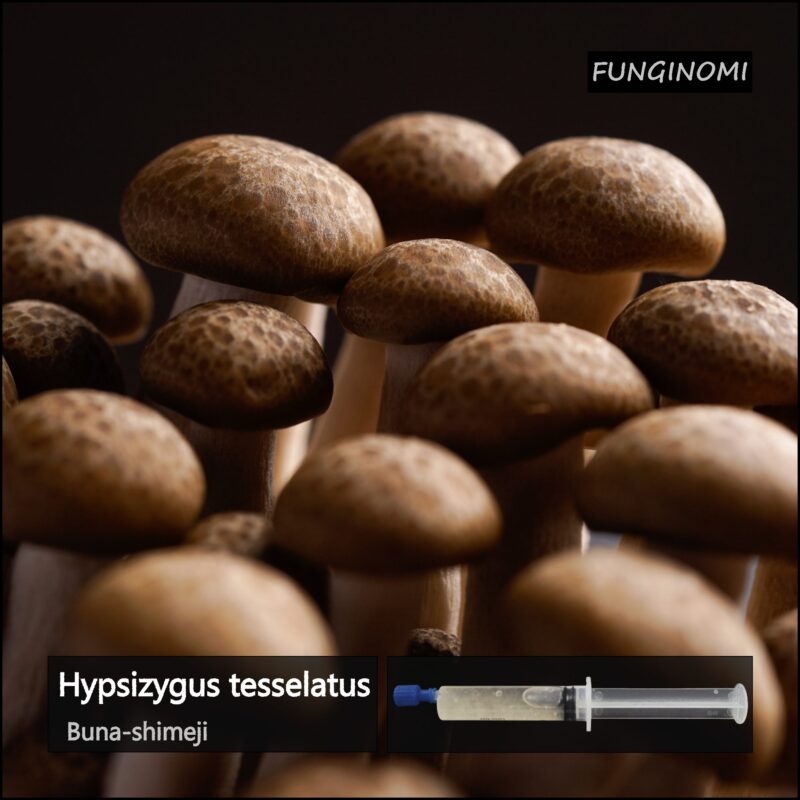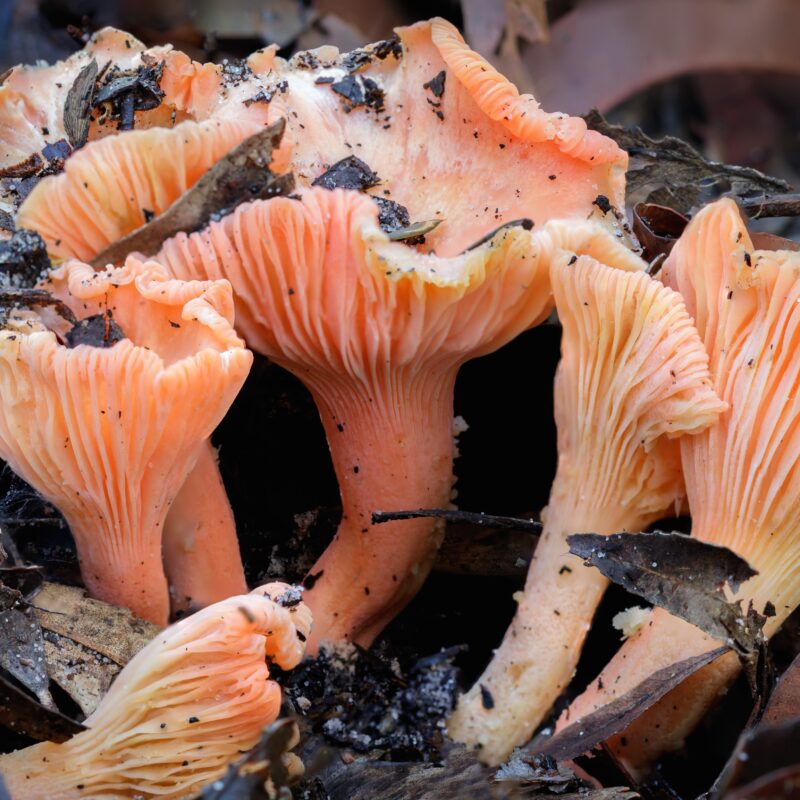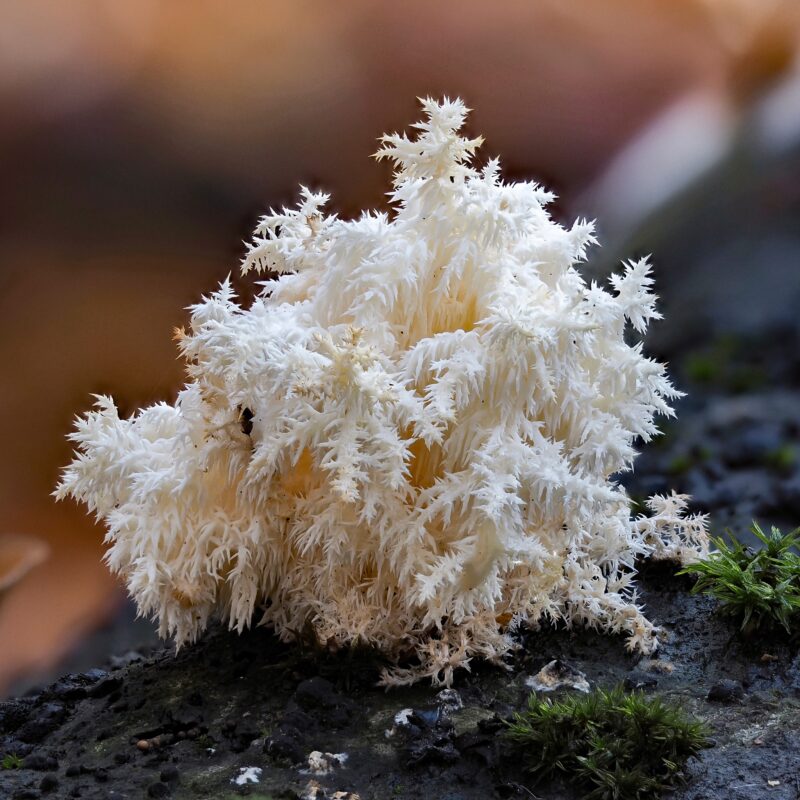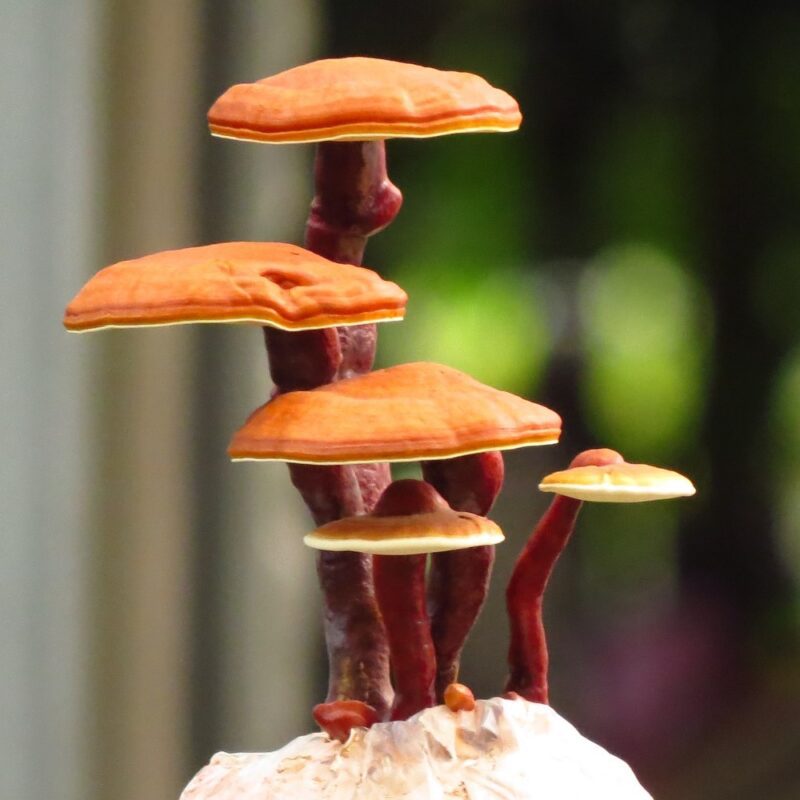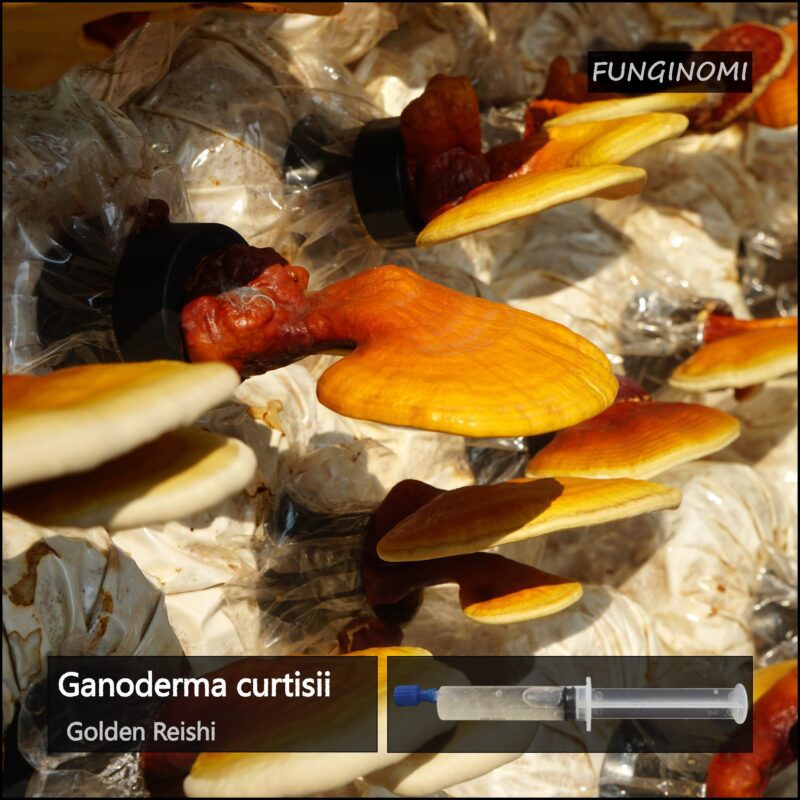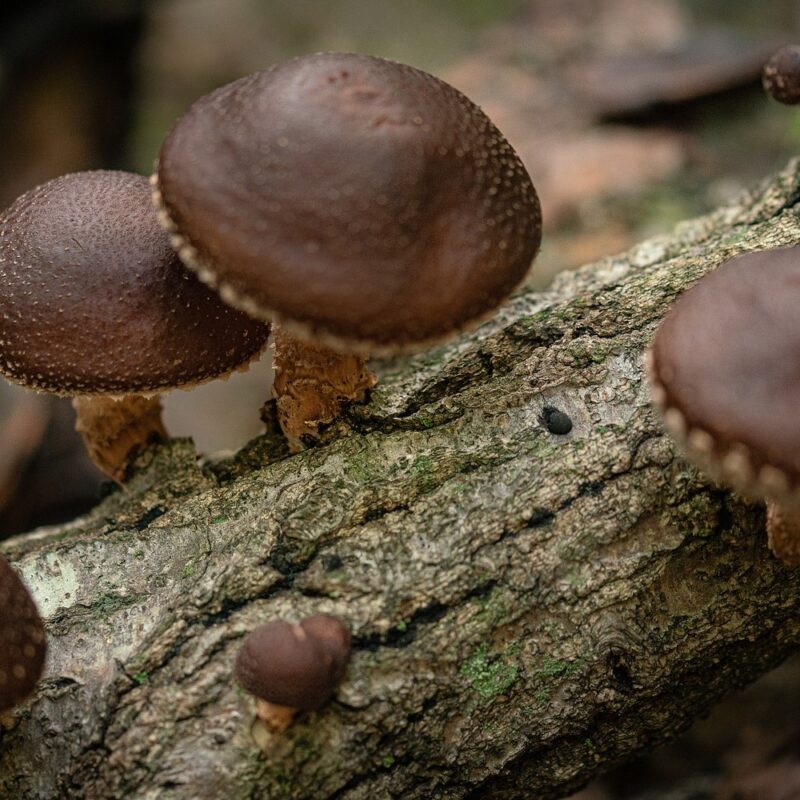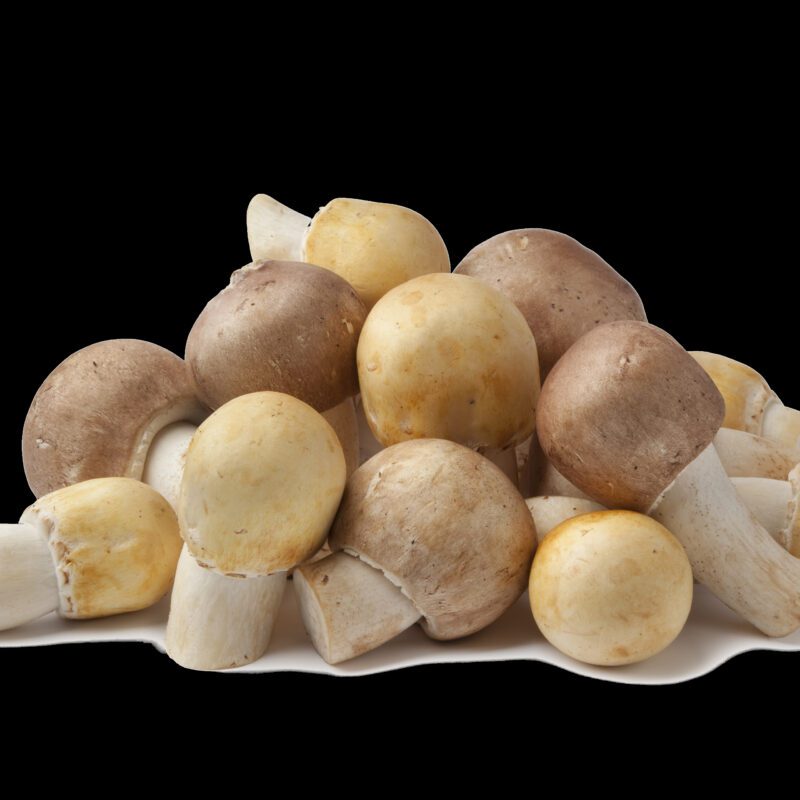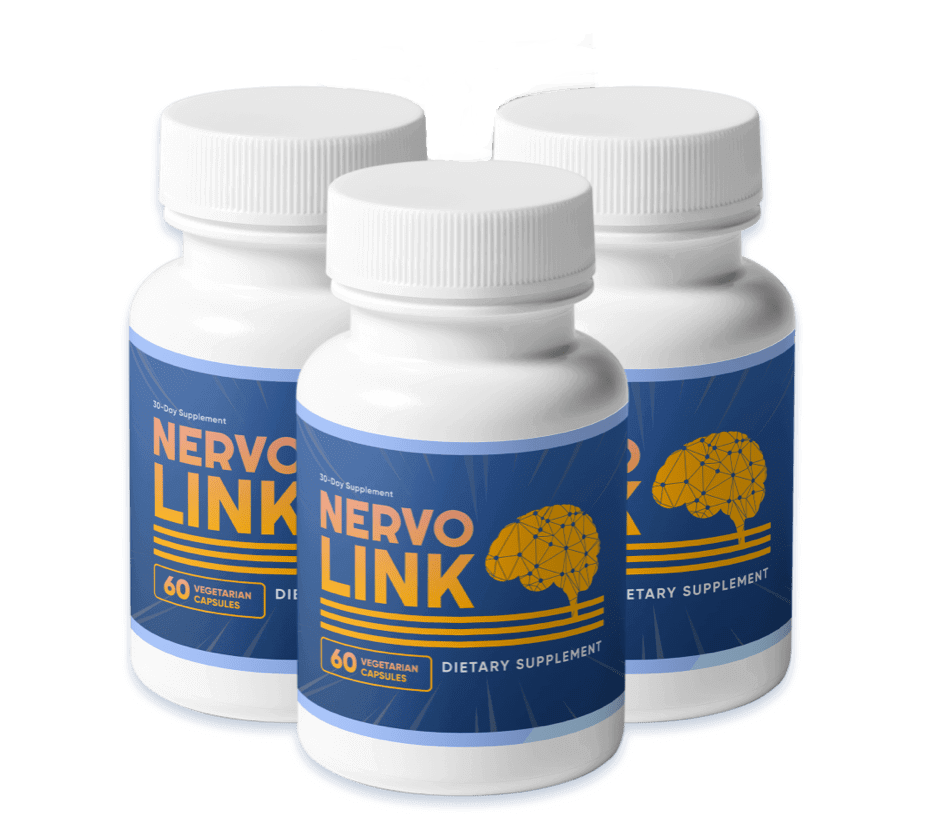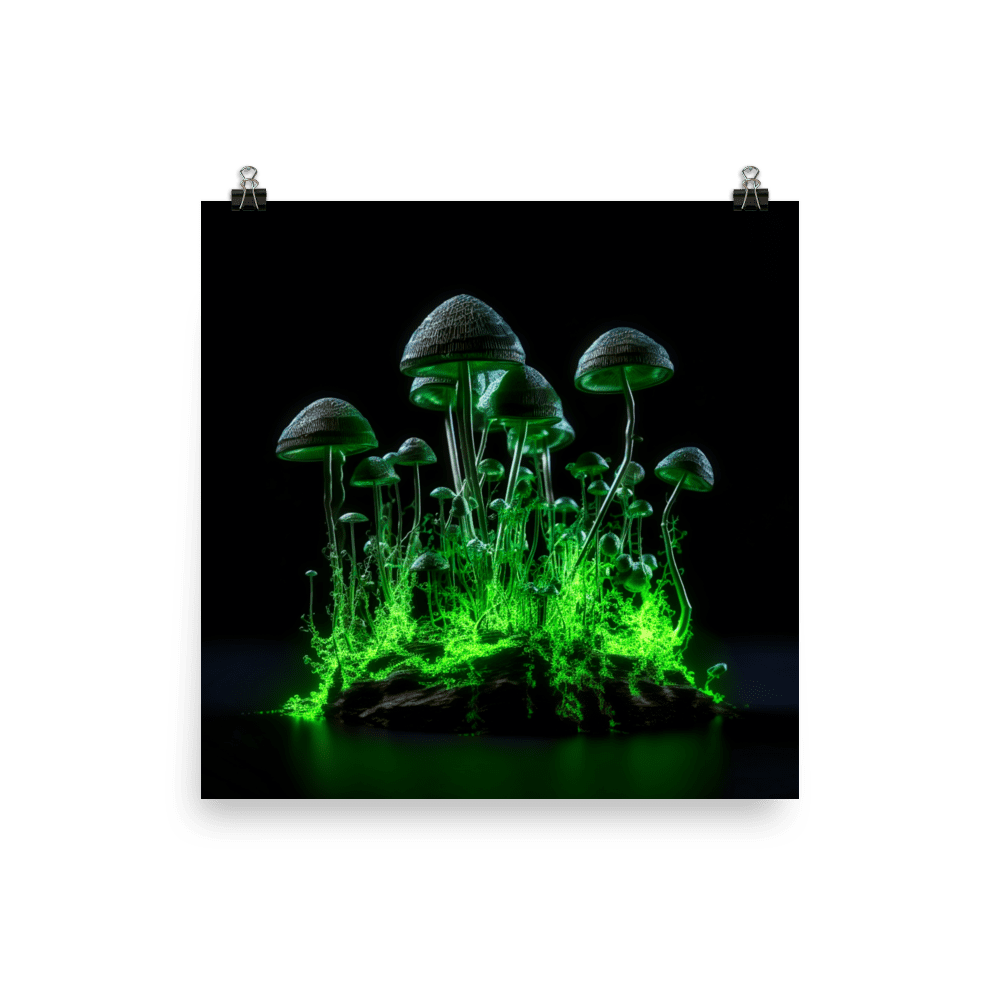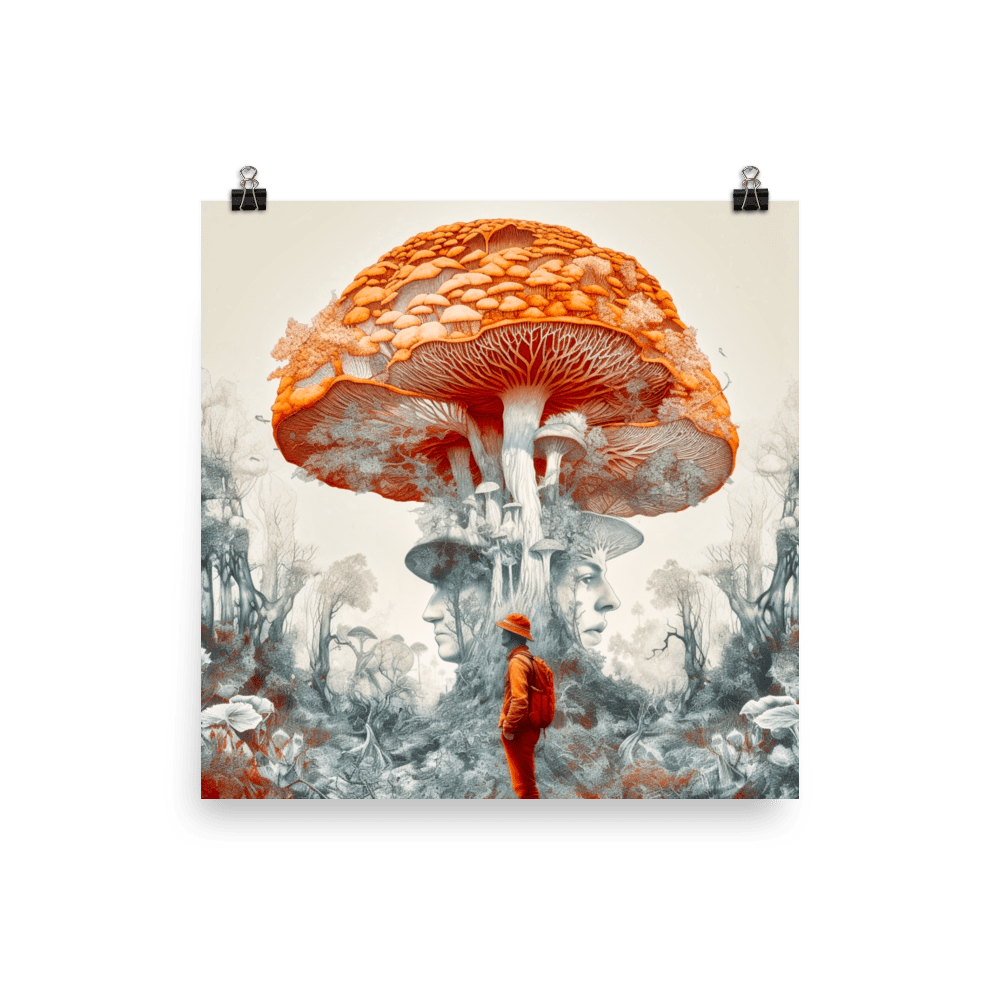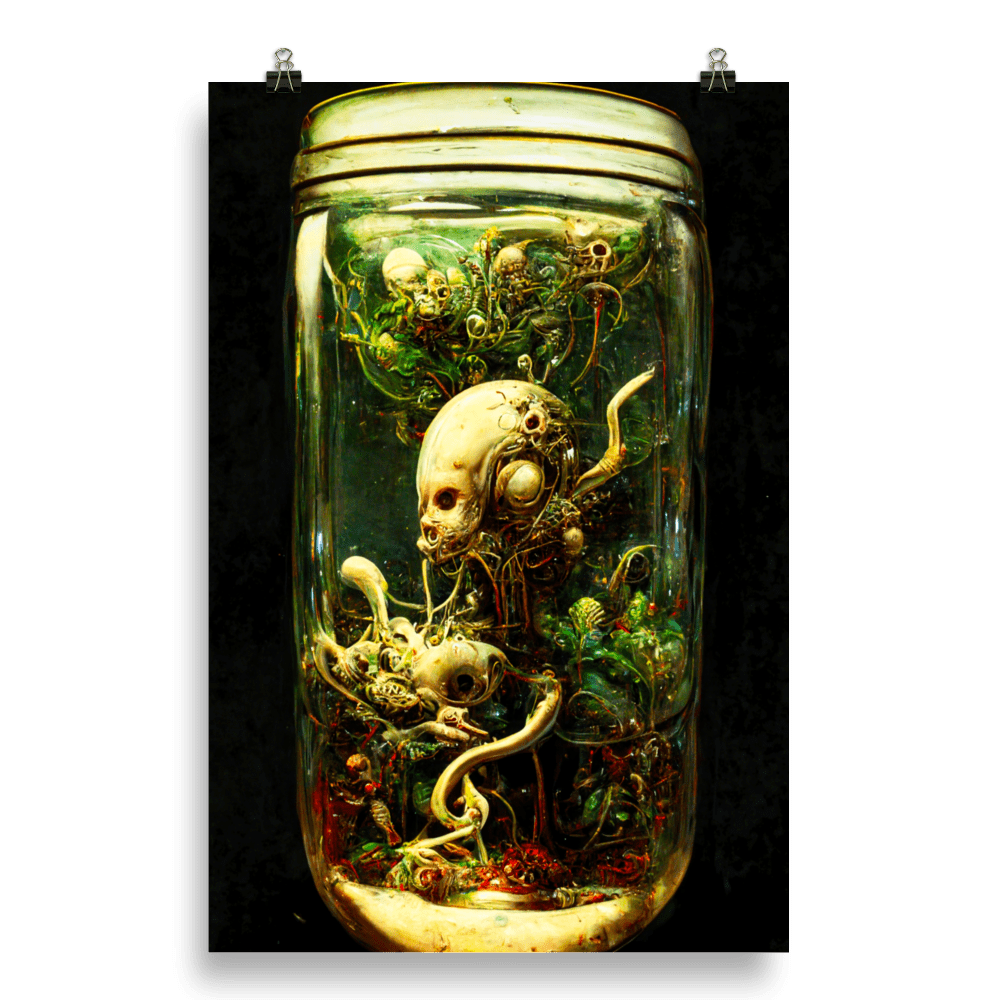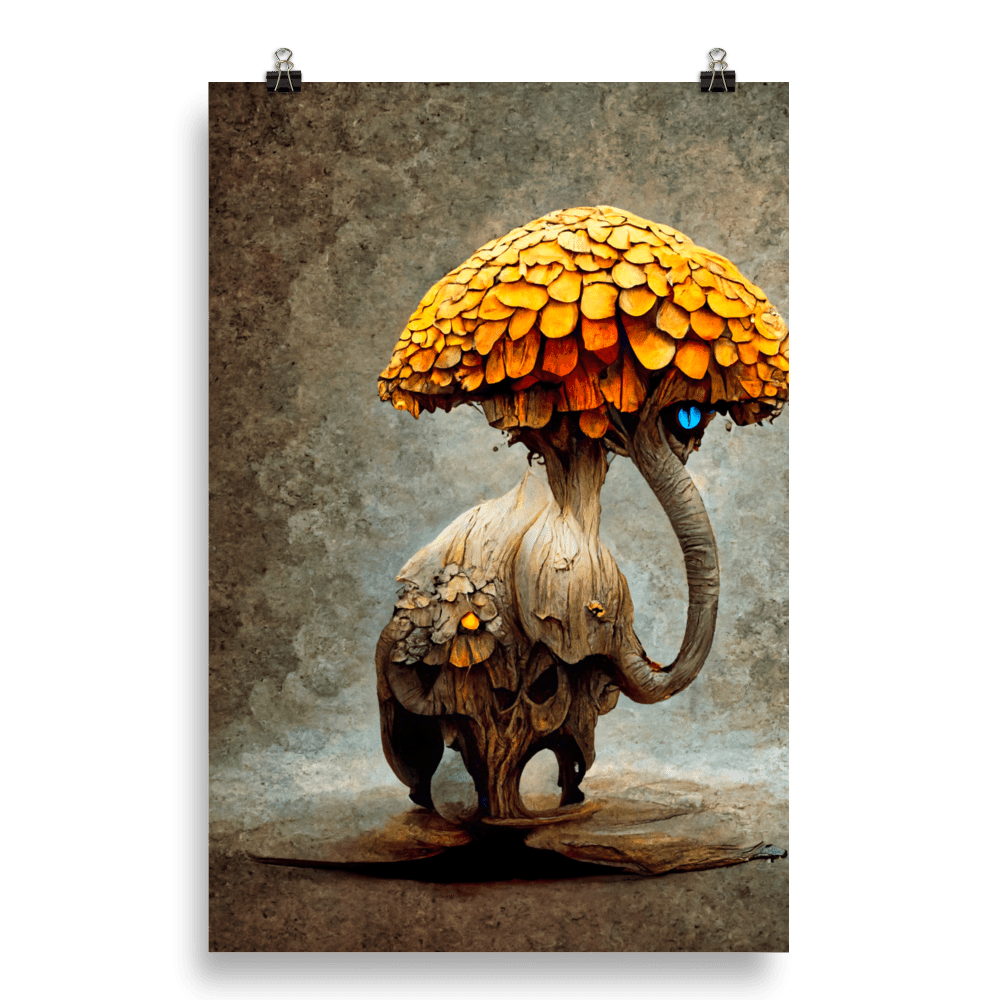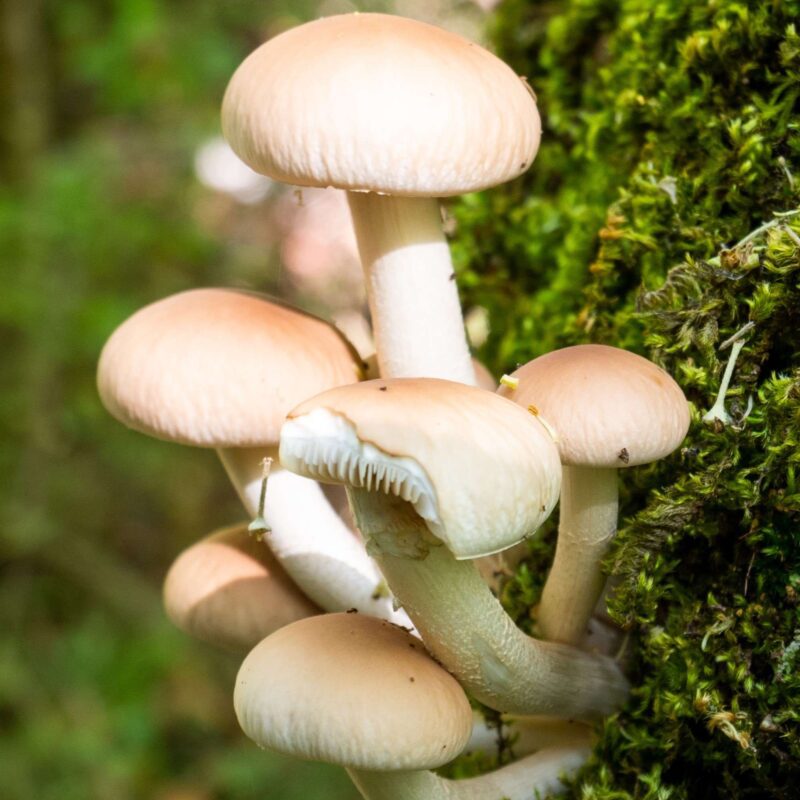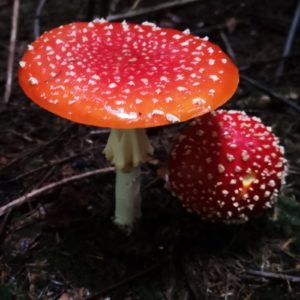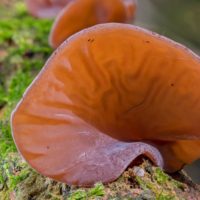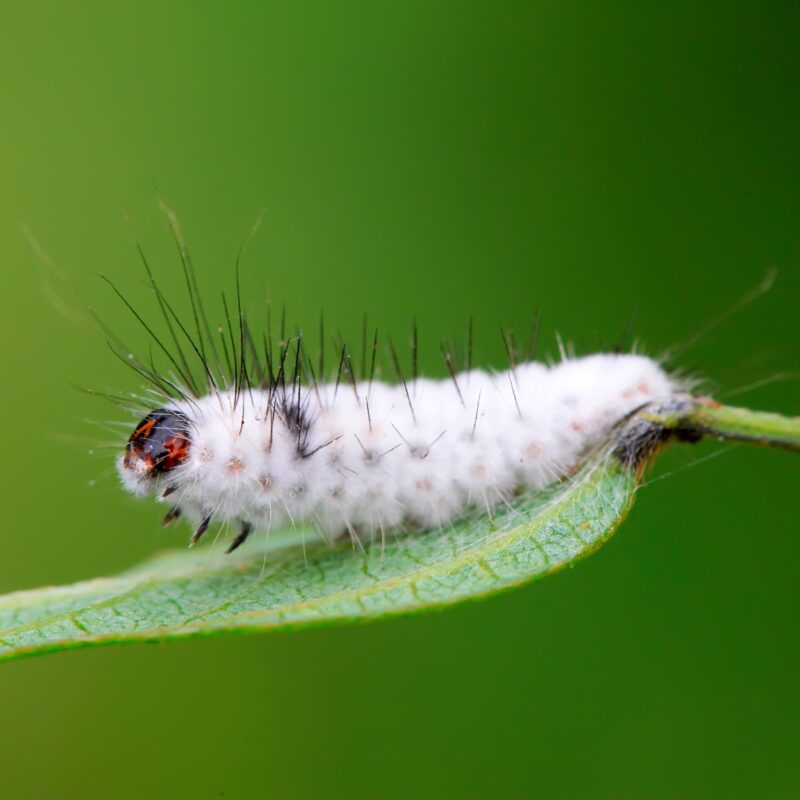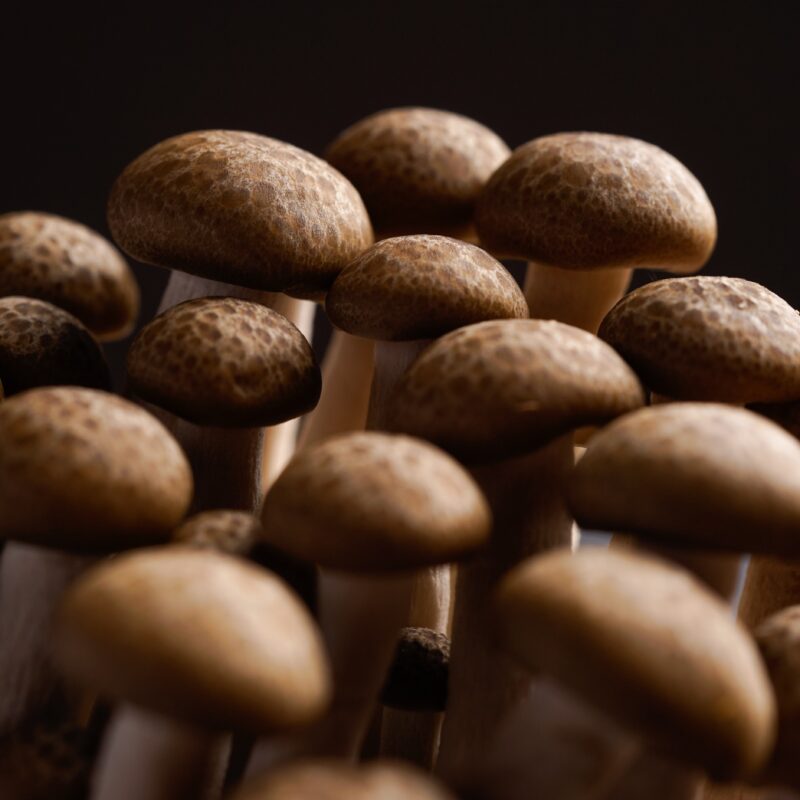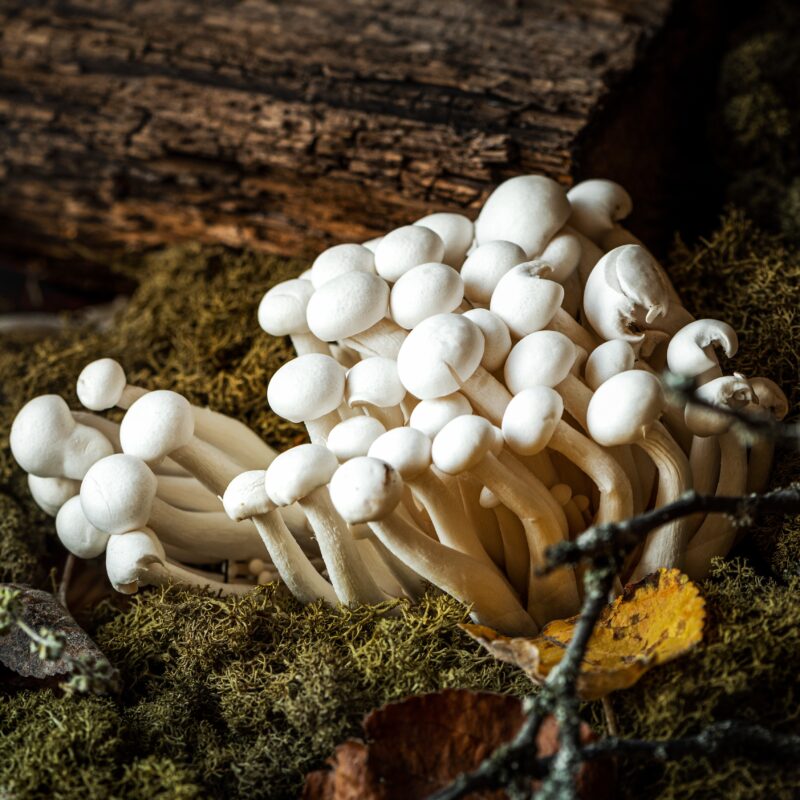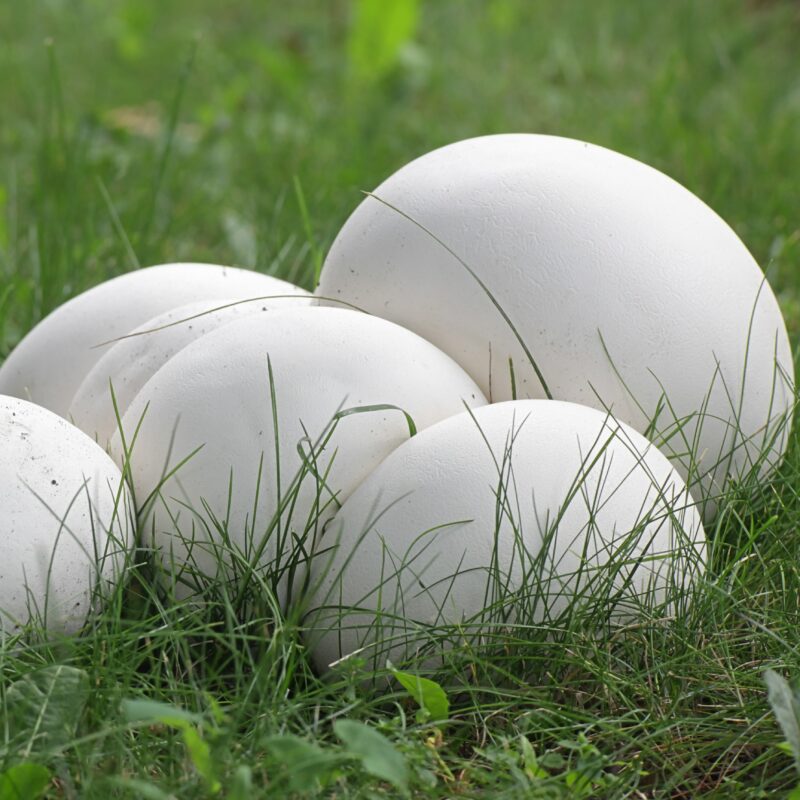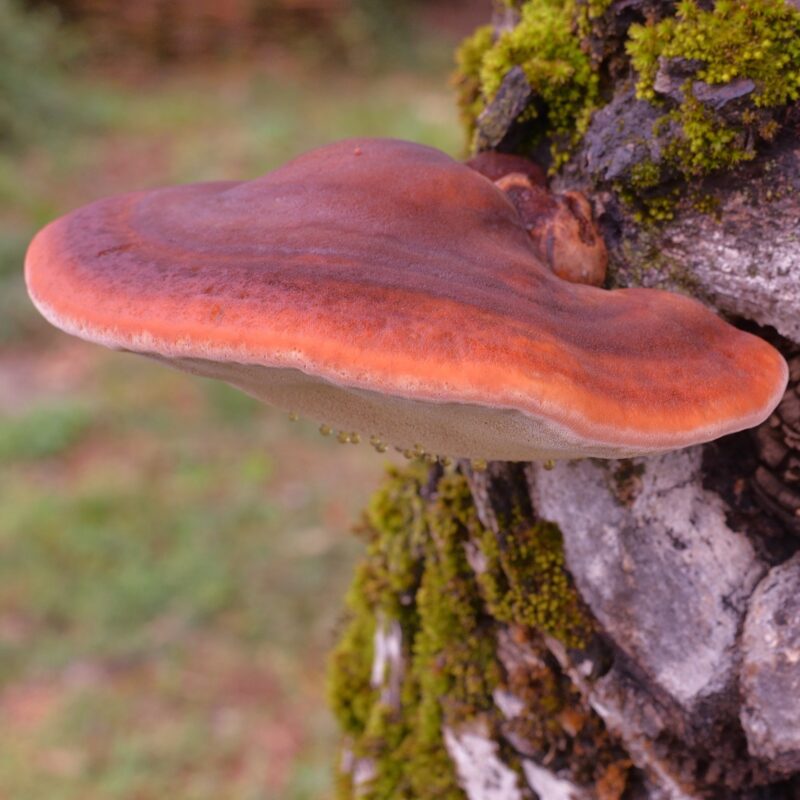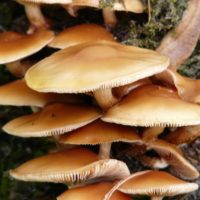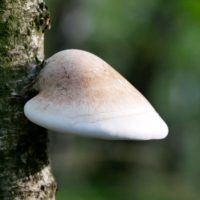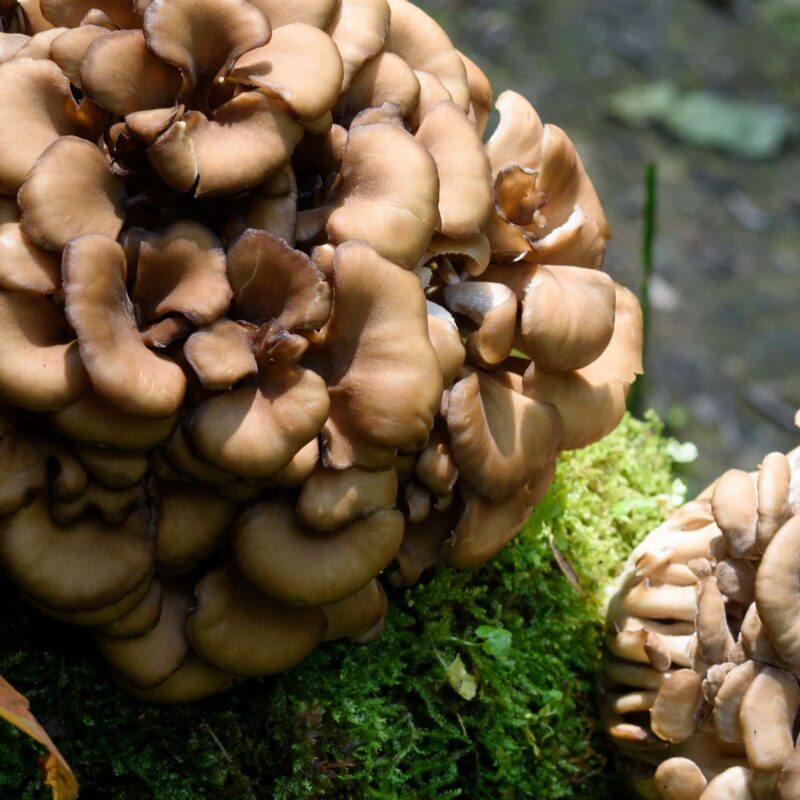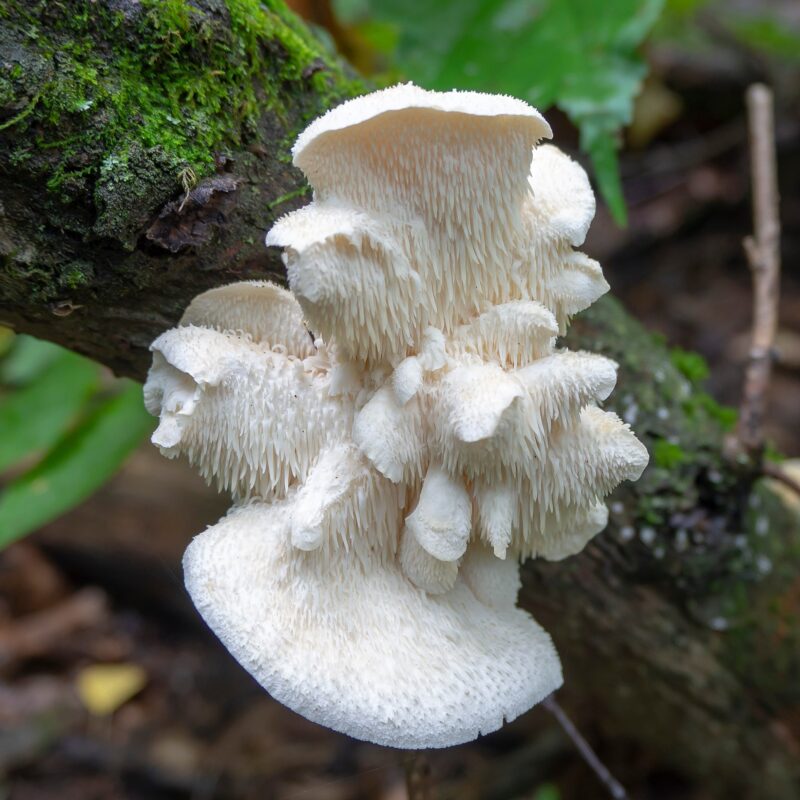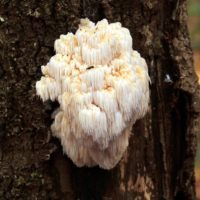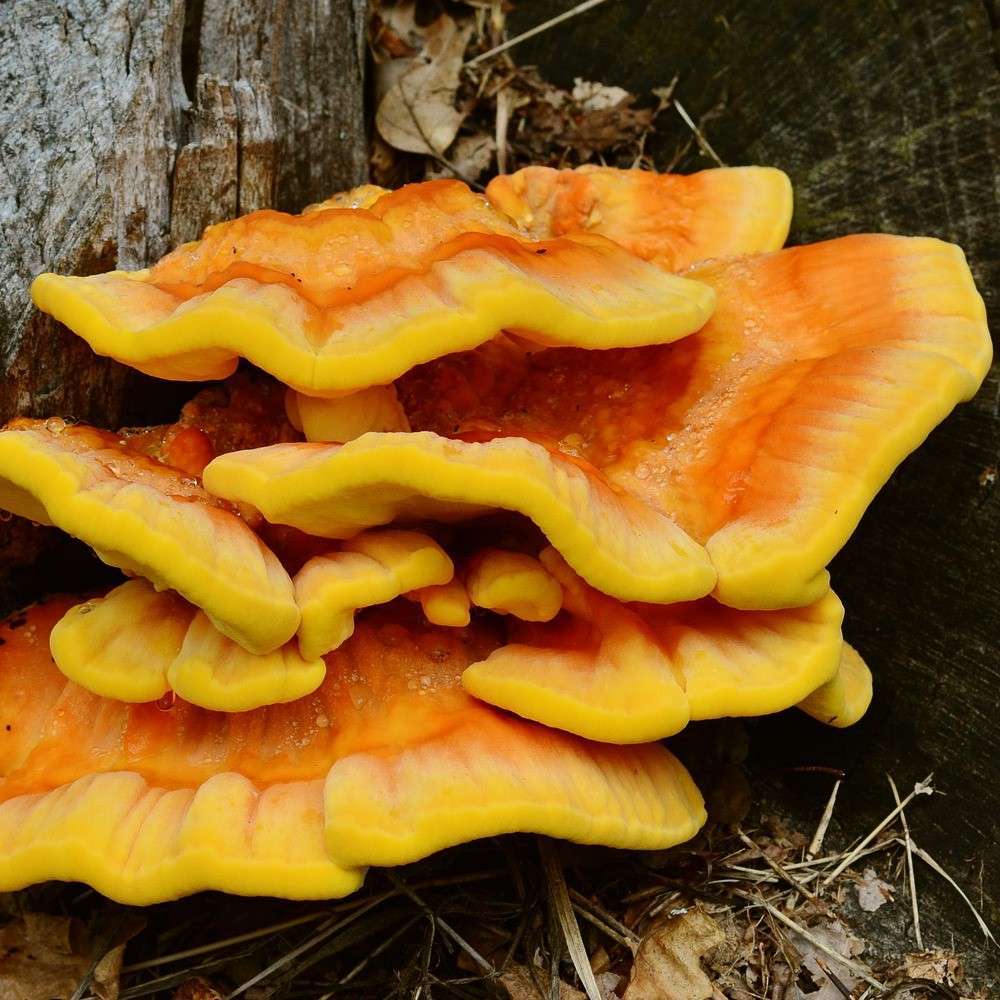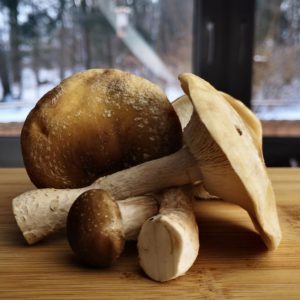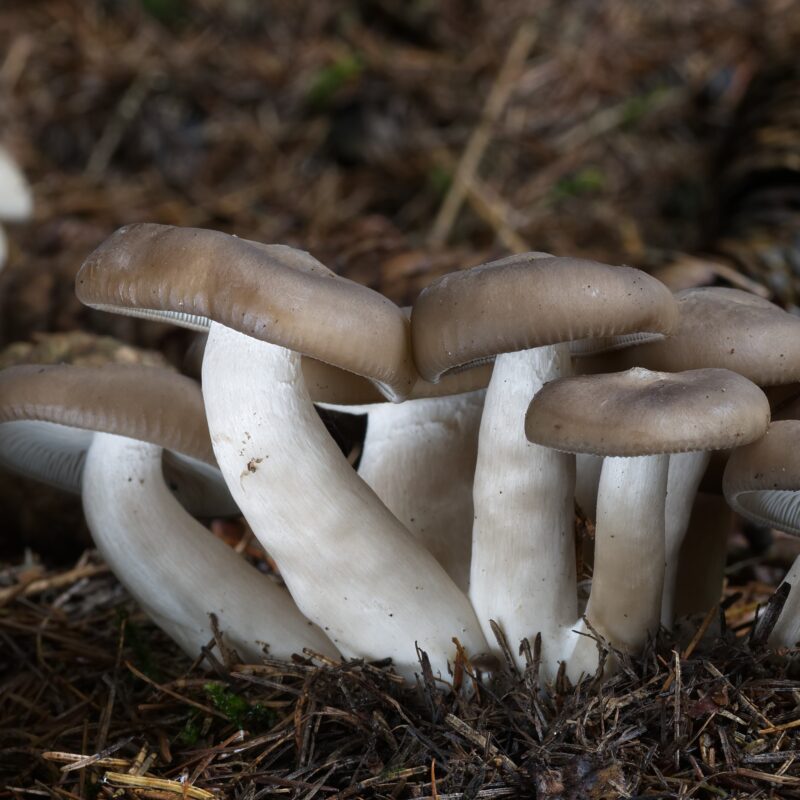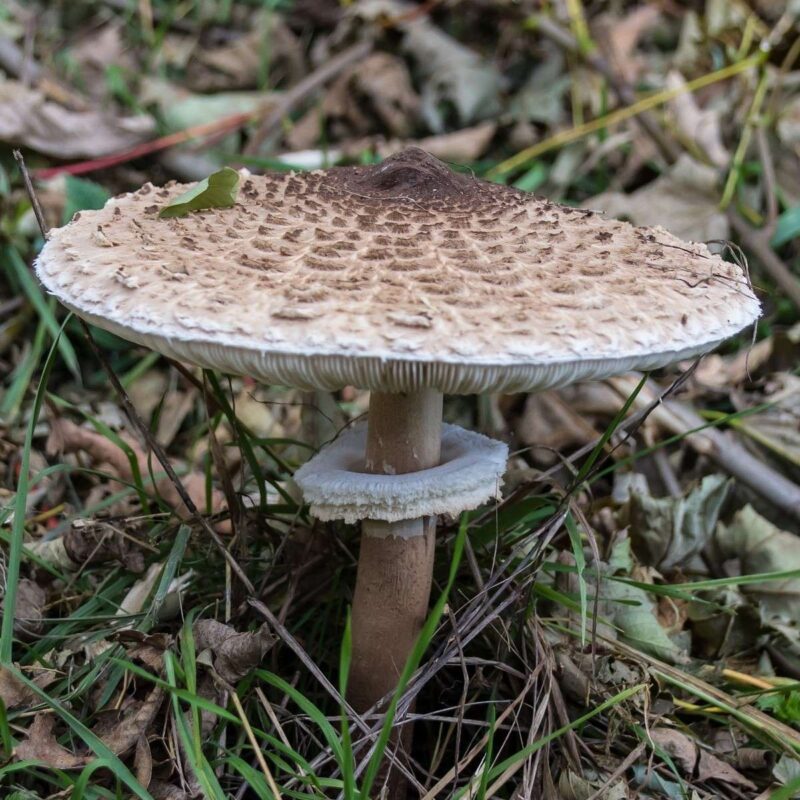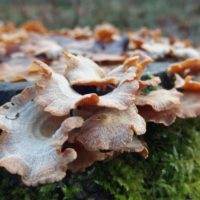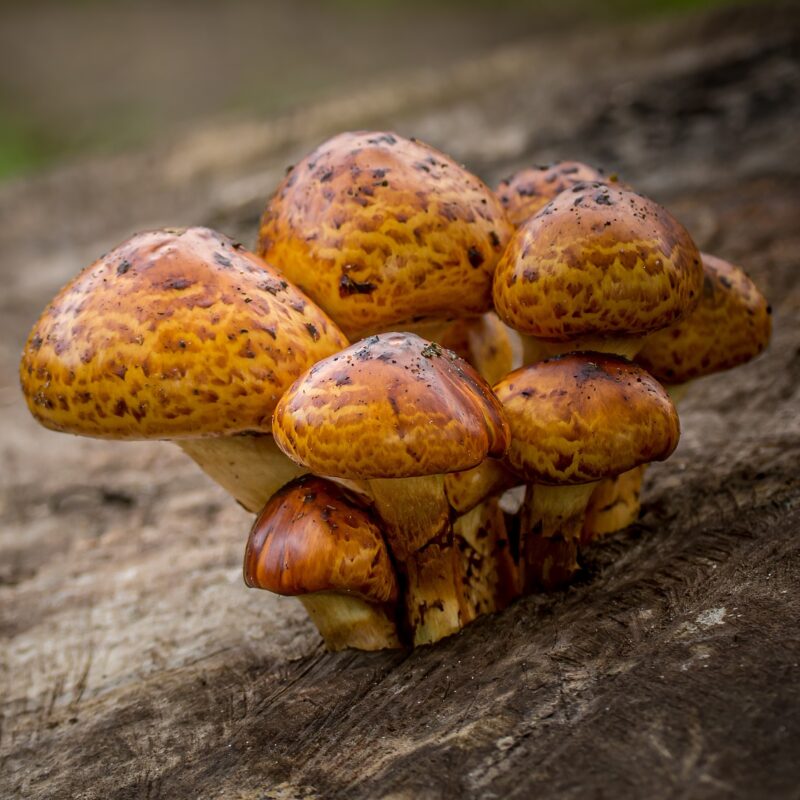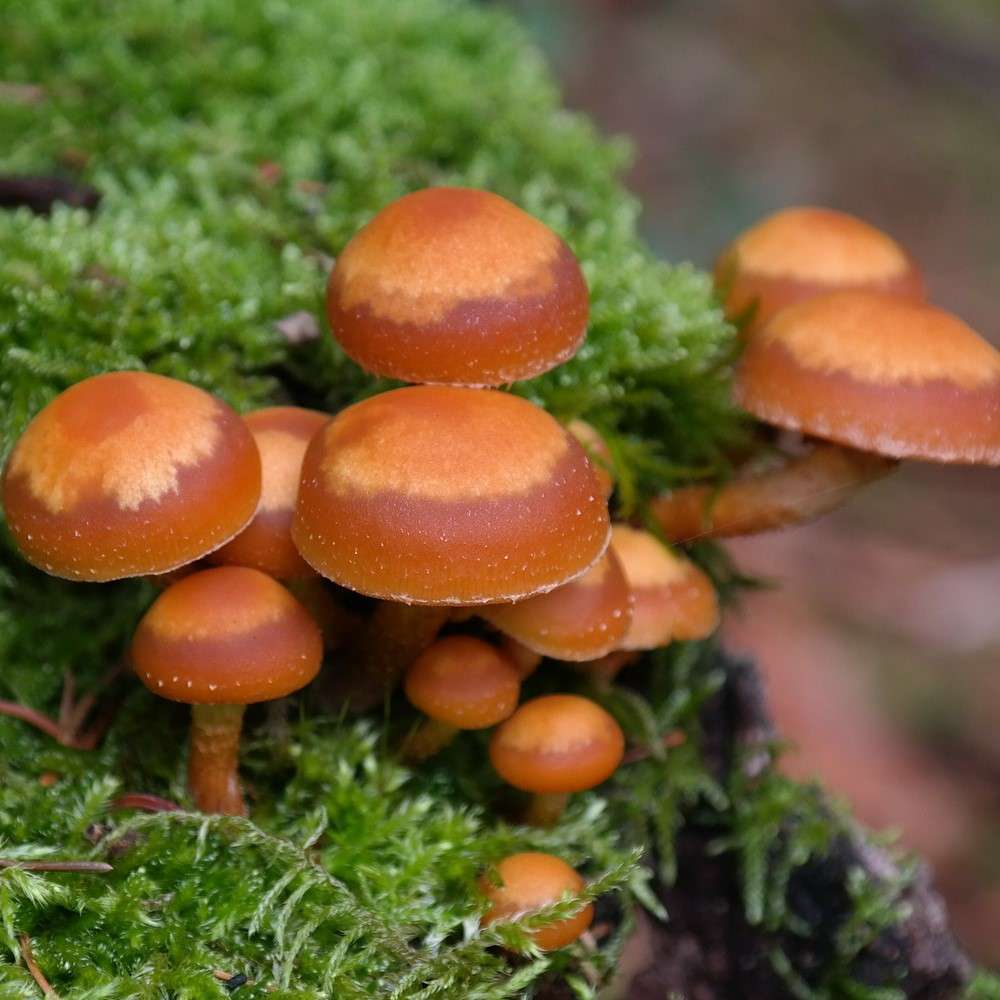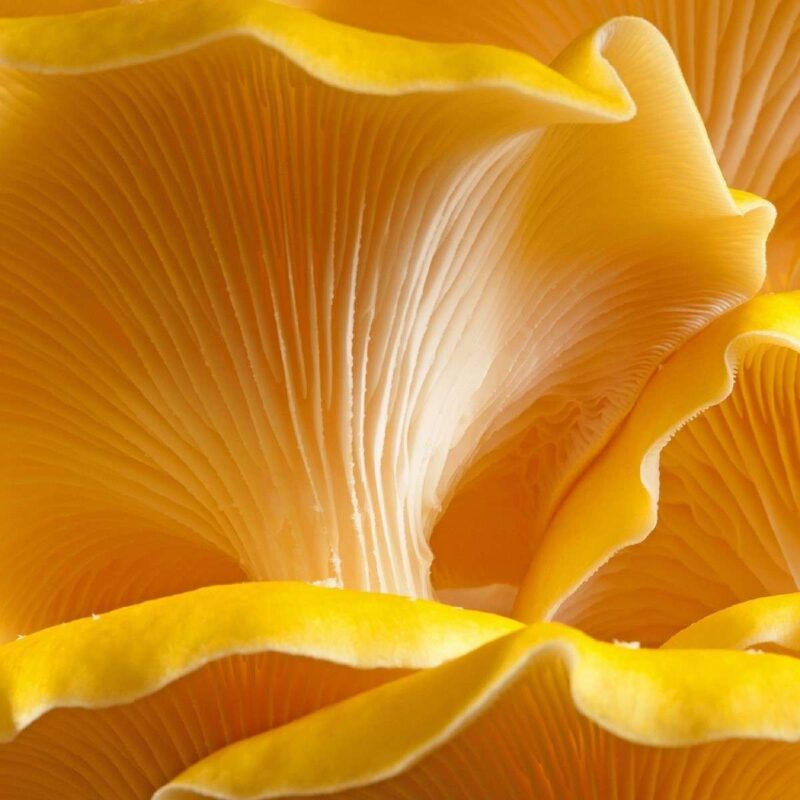Description
Properties
Ganoderma applanatum or painter’s mushroom (Ganoderma applanatum, syn.: Ganoderma lipsiense) is a very common mushroom from the lacquer porling family (Ganodermataceae).
The fruiting bodies contain comparatively little water and therefore shrink only slightly during drying. Processing into tea, powder or tinctures requires mechanical grinding, which most simple coffee grinders, vegetable graters or food processors cannot do. The texture of the dry fruiting bodies can be compared to the toughest cork. To obtain a powder from the mushroom is extremely difficult without industrial technology, even a granulate with 2-3 mm grain size requires a powerful motor rasp. Hobbyists help themselves e.g. with rasp discs for woodworking, which run on a flex.
-It is a tough bracket. With that said, Ganoderma applanatum can be made into stools and furniture if big enough.
-Ganoderma applanatum was calculated that a large 18-pound bracket liberates 30 BILLION spores per day 6 months out of a year. That is equivalent to over 5 TRILLION spores produced annually. This is an extreme case where the bracket grew to an enormous size, but still, the calculation is astounding.
Ganoderma applanatum can be made into a piece of art. The underside of the bracket is normally white and very sensitive; if it is touched, even the slightest, there will be a bruise, which ends up looking like a dark spot. Artist’s realized this and started using the undersides of these brackets as canvas.
The perennial fruiting bodies can be found at any time of the year, sporulation starts in spring when the average temperature is higher than 6 °C, it continues throughout the warm season and ends with the first frost. Spore production occurs mainly at night and has a minimum over midday.
Because this fungus is immotile, Ganoderma applanatum relies on wind, insects, and animals for distributing spores. Wind dissemination is the number one way of dispersing the spores, but insects and animals also have a part. The spores can catch a ride on them to move to a different location.
Polypores are currently being scientifically studied and some species are said to have shown antibiotic effects.
In China it has long been used in traditional medicine. Studies have shown that Ganoderma applanatum contains compounds with potent antitumor, antibacterial antifibrotic properties.
Nowadays, the Chinese and Japanese continue to use Ganoderma applanatum (and other Ganoderma species) as a way to prevent and treat a number of diseases, including hepatitis, hypertension, chronic bronchitis, bronchial asthma, hyperglycemia, rheumatism, and cancer. In China, Ganoderma applanatum and other Ganoderma species have helped to reduce saracoma 180 (cancer in connective tissues) in white mice, to treat esophageal carcinoma (malignant tumor with epithelial cells), and to treat rheumatic tuberculosis. Chinese medicine has also found Ganoderma species to be helpful in other ways, such as relieving pain, removing heat, resolving indigestion and hemostasis, and reducing phlegm. Steroids, fatty acids, applanoxidic acid, ganoderic acid, ganoderenic acid, and furanoganoderic acid were also taken from extracts of the fruiting bodies. In the medical field of the United States, many bioactive compounds found in higher basidiomycetes, including Ganoderma applanatum, show antitumor, antimicrobial, antibronchial asthma, immune-stimulating, immune-regulating, liver- protecting, anti-hypertensive, anti-hyperglycemic, anti-allergic and anti-oxidative properties. I bet that blew you out of the water. Who knew that fungi were so helpful to our health? Antibacterial properties were also found in the tube layers of Ganoderma applanatum. The antibacterial properties only fight against gram-negative bacteria, NOT gram-positive bacteria. Ganoderma applanatum has been found to fight cancer. It prevents tumor growth and increases white blood cell activity. G. applanatum doesn’t only help fight cancer, but also helps fight diabetes and the complications that come with that disease. Extracts from Ganoderma applanatum lower glucose, cholesterol, and triglyceride levels significantly. This fungus is used to treat or helpthese different diseases.
In East Asian folk medicine, Ganoderma applanatum is used as a medicinal mushroom. The active ingredients are mainly the triterpenoids and ganoderic acids contained in the sporophylls. The powdered mushroom or an extract is used. Efficacy is allegedly achieved only after a long period of ingestion. The spectrum of applications is very wide and ranges from protection against colds to anticarcinogenic effects.
1. Growing
Growing Procedure
Like other porlings and parasites, G.applanatum tolerates a well-amended substrate with a higher lime content. See my porling substrate…. Expect a several month incubation period and very slow growth.
Culture parameters are based on conditions found at sites where the fungus is found. 10°-18°C are considered conducive, as are high humidity levels.
Depending on the location of Ganoderma applanatum, the diversity of other organisms varies. Since this fungus lives on and feeds on living or dead trees, it is found where deciduous trees would be found. Other organisms that live with this fungus include various species of insects, from spiders to mites. In my research, I came across the forked fungus beetle, Bolitotherus cornutus, in particular. This insect feeds on Ganoderma applanatum. This beetle also lays one to two eggs per day on its upper and lower surfaces, resulting in a total of eight to twelve eggs. If it is large enough, there may be a completely different ecosystem or habitat on or in one fruiting body. There are certain insects that live only on certain brackets. Some of these insects are so small that they live inside the pores. So you can only imagine what organisms depend on Ganoderma applanatum for food, shelter, and reproduction.
Ganoderma applanatum is usually, though not always, found on trees. This fungus is found in many different places in the world, but it lives specifically on deciduous trees, which is its specific niche. To survive, they use trees as a food source. They can feed saproboically or parasitically.
S
|
P
|
F
|
|
|---|---|---|---|
Temp °C |
21-25 | 18-24 | 10-25 |
Relative Humidity % |
95-100 | 90-95 | 80-90 |
Duration d |
10-20 | 14-28 | 40-60 |
CO2 ppm |
>10k | 20k-40k | <2000 |
FAE per h |
0-1 | 0-1 | 4-8 |
Light lux |
– | 200-500 4-8h/d |
1000 |
Affiliate Partner
Growing
Agar Culture Media:
Cropping: 3-4 flushes 20-30 days apart
Containers for fruiting:
Biological efficience: 150 g to 200 g per kg substrate
Substrates: beech and cottonwood, and more rarely of several other tree genera including alder, apple, elm, horse chestnut and horse chestnut, maple, oak, hickory, willow, western hemlock, Douglas fir, old or diseased olive and spruce
PH: 6-9
Growing Characteristics
Spore formation occurs most frequently at night and has its lowest production value at midday. If the spores are on top of the hat, it’s because the fungus creates a temperature difference, creating a specially created wind that pushes the spores upwards. It can also grow as a live sapwood pathogen, particularly on older trees that are sufficiently moist
Natural Habitat
Ganoderma applanatum is a (weak) parasite and saprobiont that occurs mainly on hardwoods. It is able to exploit the dying host tree until the final stage of decomposition and can therefore form fresh fruiting bodies or pore layers on both barked or unbarked still solid wood as well as on very heavily decayed wood. The host range of the species is considerable; in addition to various hardwoods, it can grow (although much less frequently) on coniferous wood. The main host in Germany is the copper beech. At lower altitudes, mainly poplar species are colonized, along with significantly fewer willows and oaks; copper beech is only very rarely colonized here. With increasing altitude, the importance of copper beech as a substrate increases, with sycamore being added at high altitudes. The flat Lackporling can be found in Germany in almost all forest communities. In addition, it occurs outside of forests, if appropriate substrate is available.
Ganoderma applanatum is widespread worldwide and is only absent in treeless regions. In Germany it is found only in the dry areas more rarely.
Mostly deciduous, mostly later decomposers, but occasionally also a dangerous weak parasite on living trees, causes white rot, perennial.
2. Identification
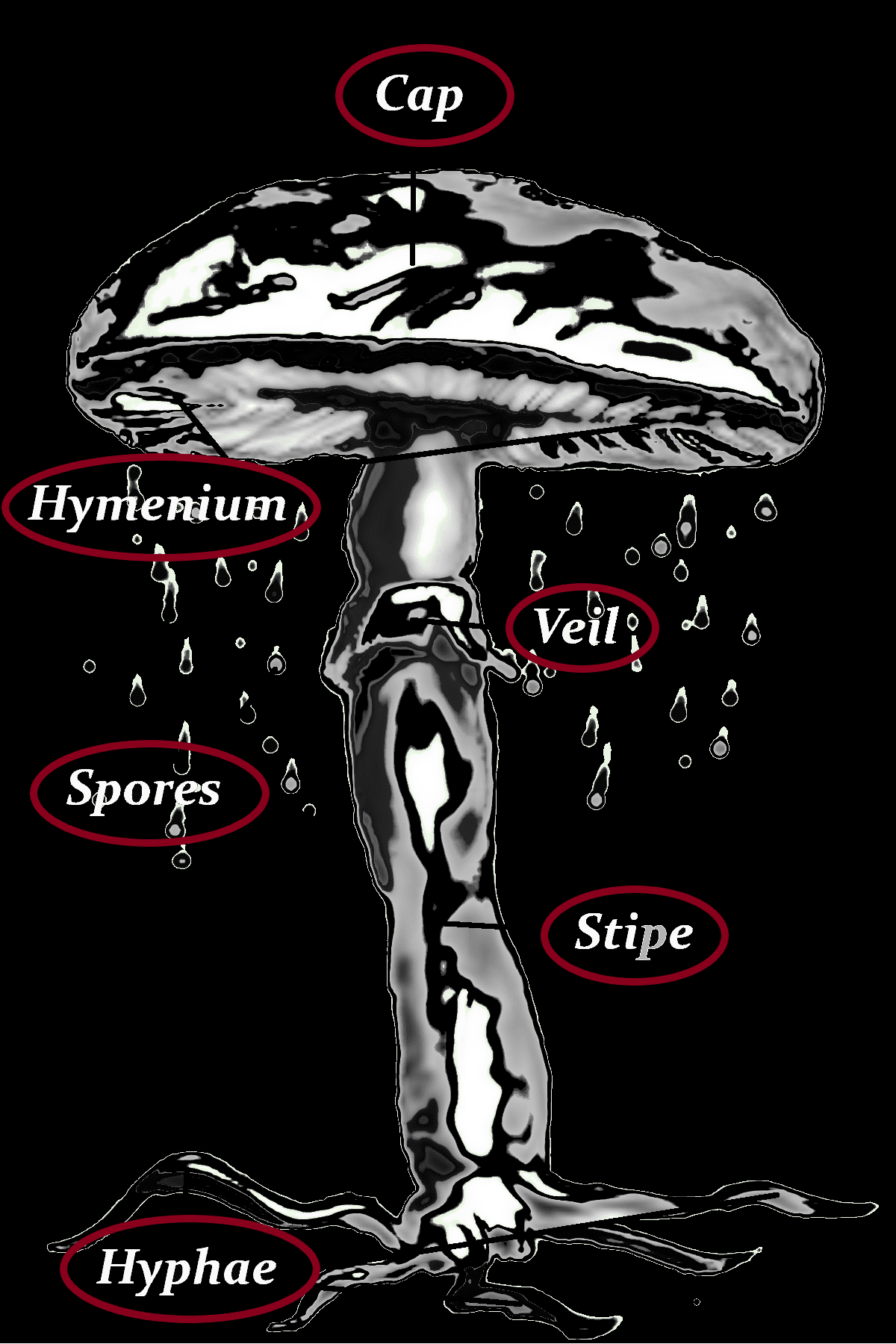
Cap
-6-20 (30) cm Ø
-brown, grey-brown
-kidney-shaped, with concentric grooves
-white margin, acuminate brown fully developed fruit bodies
-crust is thin and easily indented
-in contrast to the bulging lacquer polypores with a firm and indented resinous crust
-the shot is striped with white inclusions = whitish stripes, the so-called partridge shot
Hymenium
–creamy white then slightly yellowish-cream
-browning to the touch
-painter’s fungus <-writable pores
Stipe
–
Hyphae
–
Spores
-rusty brown
-5.5-8 x 4.5-6 µm
Danger of confusion
Fomes fomentarius, Ganoderma carnosum, Ganoderma adspersum
Veil
–
3. Consuming
Gourmet
Ganoderma applanatum is not suitable as an edible mushroom, although it is not poisonous, as food it is much too tough, of woody consistency and unsuitable for edible purposes due to its bitter constituents. Large consoles of this fungus are often used to display stuffed animals on.
Flesh
-reddish brown, dark brown,
-tough
Taste
neutral
Smell
neutral
Nutritional content per 100g
|
Bioactive Compounds
|
|
| Triterpenoids | |
| Ganoderic acids, lucidumol, lucialdehyde, lucidenic acids, ganodermic, ganolucidic acids, ganoderals, ganoderiols | Anticancer |
| Triterpenoids | Antidiabetic |
| Ganoderic acids T-Q and lucideinic acids A, D2, E2, and P |
Anti-inflammatory
|
| Triterpenes | Antioxidant |
| Ganoderic acids, ganodermin, ganoderic acid A, ganodermadiol, ganodermanondiol, lucidumol B, ganodermanontriol, ganoderic acid B, ganolucidic acid B | Antimicrobial |
| Triterpenoids, ganoderic acid, ganoderiol F, ganodermanontriol | Antiviral |
| Polysaccharides | |
| 1→3, 1→4, and 1→6-linked β and α-D (or L)-glucans, GLP-2B | Anticancer |
| Polysaccharides | Antidiabetic |
| Polysaccharides | Antioxidant |
| Polysaccharides | Antimicrobial |
| Polysaccharides (ganopoly) |
Cardiovascular problems
|
|
Proteins, Glycoproteins, and Peptidoglycans
|
|
| Glycopeptides and peptidoglycans | Anticancer |
| Protein Ling Zhi-8 (LZ-8), lectin, ribosome-inactivating proteins, antimicrobial proteins, glycopeptides/ glycoproteins, peptidoglycans/ proteoglycans, ganodermin A, ribonucleases, proteinases, metalloproteases, laccases |
Immunomodulatory, anticancer, and antitumor
|
| Proteoglycans, proteins (LZ-8) | Antidiabetic |
| Polysaccharide–peptide complex | Antioxidant |
|
Phenolic compounds
|
|
| Phenolic components, phenolic extracts | Antioxidant |
| Saponins |
Anticancer and antioxidant
|
| Sterols; e.g., ergosterol | Provitamin D2 |
| Long-chain fatty acids | Antitumor |
| Minerals | |
| Potassium | 430mg |
| Phosphorus | 225mg |
| Sulfur | 130mg |
| Magnesium | 8mg |
| Sodium | 2.8mg |
| Calcium | 1.9mg |
| Copper | 26mg |
| Manganese | 22mg |
| Iron | 2.22mg |
| Zinc | 0.7mg |
| Thiamine (B1) | 3.5mg |
| Riboflavin (B2) | 17mg |
| Niacin (B3) | 62mg |
| Pyridoxine (B6) | 0.7mg |
| Ascorbic acid | 32mg |
| pH value | 5.6 |
| Energy (kcal) | 240 |
| Water-soluble proteins % | 19% |
| Total lipids | 3.00% |
| Reducing sugars | 4.4% |
| Nonreducing sugars | 1% |
| Total sugars | 5.4% |
4. Data med, edible
other names
| Chinesisch (traditionell) | 樹舌 |
| Chinesisch (traditionell) | 樹舌靈芝 |
| Chinesisch (vereinfacht) | 树舌灵芝 |
| Deutsch |
Flacher Lackporling
|
| Deutsch | Malerpilz |
| Dänisch |
Flad lakporesvamp
|
| Englisch | artist’s bracket |
| Englisch | artist’s conk |
| Englisch | artist’s fungus |
| Estnisch | jänesvaabik |
| Finnisch | Lattakääpä |
| Französisch |
Ganoderme Plat
|
| Französisch |
Polypore aplani
|
| Hebräisch | בהוקית שטוחה |
| Japanisch |
コフキサルノコシカケ
|
| Litauisch |
Plokščiasis blizgutis
|
| Niederländisch |
Platte tonderzwam
|
| Norwegisch | flatkjuke |
| Ojibwe |
Jibi Epush Kwaegun
|
| Polnisch |
Lakownica spłaszczona
|
| Russisch |
Трутовик плоский
|
| Schwedisch | platticka |
| Serbian |
Пљосната сјајница
|
| Spanisch |
Hongo del Artista
|
| Spanisch | Oreja de palo |
| Spanisch |
Yesquero aplanado
|
| Tschechisch |
lesklokorka ploská
|
| Türkisch |
yassı Reişi mantarı
|
| Ungarisch | Deres tapló |
| Wissenschaftl. Name |
Fomes applanatus
|
| Wissenschaftl. Name |
Fomes leucophaeus
|
| Wissenschaftl. Name |
Ganoderma applanatum
|
| Wissenschaftl. Name |
Ganoderma lipsiense
|
| Wissenschaftl. Name |
Polyporus applanatus
|
| Wissenschaftl. Name |
Polyporus lipsiensis
|
other names
Flacher Lackporling, Malerpilz, Ganoderma Applanatum, Ganoderma Lipsiense, Boletus Applanatus, Elfvingia Applanata, Fomes Applanatus, Fomes Vegetus, Ganoderme Aplani, Ganoderma Lipsiense, Polyporus Applanatus, Polyporus Vegetus
| Kingdom | Fungi |
|---|
| Division | Basidiomycota |
| Class | Agaricomycetes |
| Order | Polyporales |
| Family | Ganodermataceae |
| Genus | Ganoderma |
| Species | G. applanatum |
| Ecology | Parasitic |



